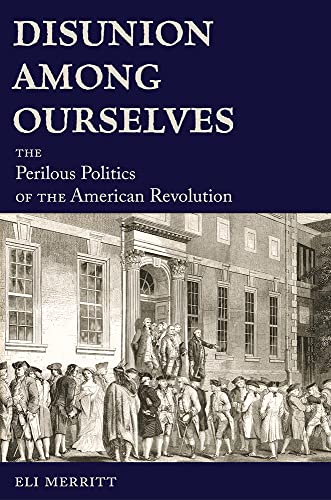Eli Merritt deftly explores these themes in his new book, Disunion Among Ourselves: The Perilous Politics of the American Revolution. What other studies on America’s War for Independence commonly leave in the background, Merritt brings to the fore: the centrifugal forces of regional selfishness, mutual jealousies, and sometimes barely-disguised hostility that were giving the lie to the rebels’ declared identity as the United States of America.
Merritt admirably achieves what he sets out to do. Furthermore, he is a wordsmith of the first water. If it is reasonable to say that a fair test of an author’s skill is his ability to write engaging prose about drying codfish on the shores of Newfoundland, then this author passes the test with flying colors.
“The founding of a single United States,” Merritt points out, “was hardly the easy marriage of thirteen homogeneous, liberty-loving states so often depicted in American history.” A better metaphor, he suggests, “is that of a shotgun wedding.”
But what, exactly, does it mean to be disunited? In one sense, disunion merely expresses the absence of union. To understand it in that sense, it would be necessary to first understand the meaning of union. And in the years during and immediately following the War, there existed radically different opinions regarding the sort of union that would be possible or desirable between the states. For that reason, the meaning of its negation, disunion, can be subjective, relative to one’s expectations for union.
Many of the leading figures at this time were seeking nothing more cohesive than a temporary military alliance. Indeed, several of those waving “JOIN, or DIE” flags would have been content with even less—with the mere outward appearance of a military alliance, even if it belied the reality. If they successfully achieved union under those loose terms, however, it would constitute disunion for the more continentally minded, who sought a permanent confederacy of commercial trading partners.
Far more anachronistic would be to measure disunity against a standard of union that would not exist in this country for centuries yet to come. Yet the book at times appears to view the subject through that lens.
In 1777, Merritt tells us, members of the Continental Congress were disagreeing “on the very meaning of independence as proclaimed in the late declaration. Were the ‘United States of America’ one independent republic or thirteen separate ones …?” But, really, was anyone seriously asking if the United States was a single republic in 1777?
